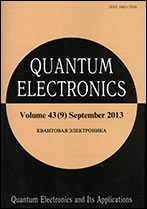|
This article is cited in 20 scientific papers (total in 20 papers)
IV INTERNATIONAL CONFERENCE ON ATOM AND MOLECULAR PULSED LASERS (AMPL'99)
Surface oxide removal by a XeCl laser for decontamination
M. L. Sentis, Ph. Delaporte, W. Marin, O. Uteza
Laser ablation and application laboratory, Aix-Marseille II Université, Marseille, France
Abstract:
The laser ablation performed with an automated excimer XeCl laser unit is used for large surface cleaning. The study focuses on metal surfaces that are oxidised and are representative of contaminated surfaces with radionuclides in a context of nuclear power plant maintenance. The unit contains an XeCl laser, the beam delivery system, the particle collection cell, and the system for real-time control of cleaning processes. The interaction of laser radiation with a surface is considered, in particular, the surface damage caused by cleaning radiation. The beam delivery system consists of an optical fibre bundle of 5 m long and allows delivering 150 W at 308 nm for laser surface cleaning. The cleaning process is controlled by analysing in real time the plasma electric field evolution. The system permits the cleaning of 2 to 6 m2 h–1 of oxides with only slight substrate modifications.
Received: 20.12.1999
Citation:
M. L. Sentis, Ph. Delaporte, W. Marin, O. Uteza, “Surface oxide removal by a XeCl laser for decontamination”, Kvantovaya Elektronika, 30:6 (2000), 495–500 [Quantum Electron., 30:6 (2000), 495–500]
Linking options:
https://www.mathnet.ru/eng/qe1750 https://www.mathnet.ru/eng/qe/v30/i6/p495
|


| Statistics & downloads: |
| Abstract page: | 222 | | Full-text PDF : | 134 | | First page: | 1 |
|





 Contact us:
Contact us: Terms of Use
Terms of Use
 Registration to the website
Registration to the website Logotypes
Logotypes










